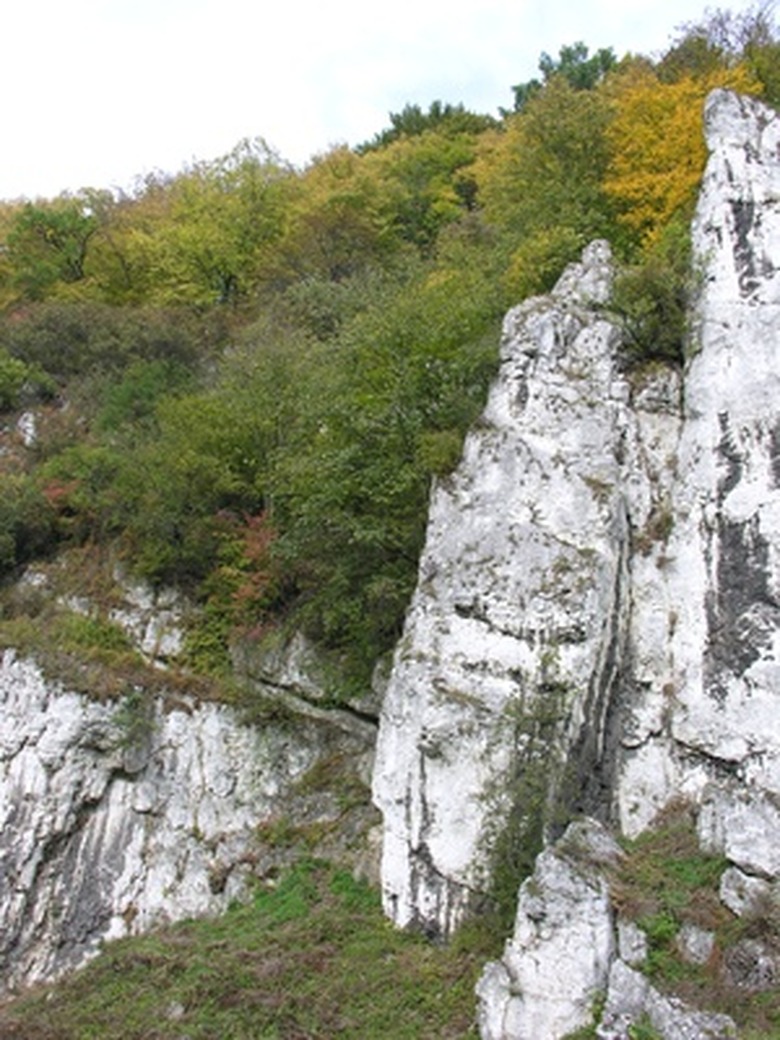Difference Between Granite & Limestone
Granite and limestone are two of the most common and widely distributed rocks on Earth. Both have been used as key building blocks over the centuries. They are, however, very different in their composition, appearances and uses. Although the science behind the formation of these types of rocks is complex, you can identify significant distinctions between granite and limestone.
Rock Type
Rock Type
Granite is an igneous rock. As with other rocks in this category, it is formed from magma that cools and solidifies after a volcanic eruption. Granite rocks were formed when pockets of magma cooled below the Earth's surface, with the overall process taking longer than for many other igneous rocks.
Limestone is classed as a sedimentary rock. It was formed on the surface of the Earth by the process of sedimentation, with several minerals or organic particles coming together to form a solid sediment. Limestone is formed from at least 50 per cent calcium carbonate. Grains of carbonates, such as ooids and peloids, and fragments of coral may also be present in limestone.
Appearance
Appearance
Granite has a grainy appearance and can be pink or varying shades of gray, depending upon its chemical and mineral make-up. The rock is usually found in large deposits; for example, those that form large massifs or tors.
Limestone is mainly white, although it may be tinted by impurities. The presence of iron oxide, for example, gives it a brownish or yellowish tint, and carbon can give it a blue, black or gray hint. Although often hidden from view, when bands of limestone do emerge from the Earth's surface, it is often in spectacular style. Famous rocky outcrops of limestone include Malham Cove in North Yorkshire, U.K., and the Bridal Veil Falls in Utah.
Physical Properties
Physical Properties
Samples of granite usually boast a compressive strength of around 200 MPa. They usually have a density in the region of 2.65 to 2.76 grams per centimeter cubed.
The compressive strength of limestone, however, is more varied, ranging from 15MPa to in excess of 100MPa. Its density, at around 2.6 grams per centimeter cubed, is roughly the same the density of granite.
Uses
Uses
Thanks to its abundance, durability and the ease with which it can be extracted and cut, limestone has long served as an important building material. The Great Pyramid of Giza in Egypt, for example, was constructed entirely from limestone. It was also highly popular in the late 19th and 20th centuries, used on a range of buildings and monuments across Europe and the US. Limestone is also used to build roads, in the manufacturing of cement and to extract iron from its ore.
Granite has also served an important role in the construction sector, again due to its durability. Notable examples of its use over the centuries include several of the pyramids in Egypt. Aberdeen, Scotland, is known as the Granite City because it was built largely from the rock.
Cite This Article
MLA
Hewitt, David. "Difference Between Granite & Limestone" sciencing.com, https://www.sciencing.com/difference-between-granite-limestone-7880098/. 24 April 2017.
APA
Hewitt, David. (2017, April 24). Difference Between Granite & Limestone. sciencing.com. Retrieved from https://www.sciencing.com/difference-between-granite-limestone-7880098/
Chicago
Hewitt, David. Difference Between Granite & Limestone last modified March 24, 2022. https://www.sciencing.com/difference-between-granite-limestone-7880098/
